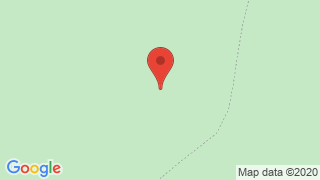Sangay National Park
Discover here how to get to Sangay National Park in Ecuador and learn about its flora and fauna, climate, location and tourist attractions of this wonderful place.












What do you need to know?
- Sangay National Park was created in 1975 as a Sangay Ecological Reserve.
- Later in 1979 it was categorized as Sangay National Park.
- Due to its biological, ecological and cultural importance, on December 7, 1983, UNESCO declared it as "Natural Patrimony of Humanity".
- It is located in the provinces of Chimborazo, Tungurahua, Cañar and Morona Santiago. It covers an area of 502,067 hectares. Its altitude varies from 900 to 5319 meters above sea level.
- Sangay National Park flora and fauna
- Sangay Flora - The flora of Sangay National Park is distributed into 10 life zones. There are 586 endemic species of flora and about 45 of these are orchids, you can also find Bromeliads, Heliconias, extensive grasslands and extensive forests that give the park an extraordinary beauty.
- Fauna in Sangay - The conservation values of Sangay National Park are defined by their importance in terms of biodiversity, these Focal objects are: its emblematic species, Spectacled Bear, Mountain Tapir, Andean Condor (bird represented in the Flag and the National Coat of Arms of Ecuador) The fauna is distributed in three geographical zoo floors: subtropical, temperate and high Andean, are the habitat of several endemic species and populations of endangered species of the Ecuadorian Sierra.
- The flora and fauna of Ecuador is very diverse thanks to the 4 regions it possesses.
-
How to get Sangay National Park?
-
From Quito - Take the Pan-American Highway south from Quito to Riobamba (194 km). From this city you can access several sites. Atillo. Take the road to San Luis until you reach the Guamote - Macas road that leads to the community of Atillo (74 km).
- From Ozogoche - Take the Panamericana Sur to the Charicando detour, in the Palmira area (64 km); from there you travel 35 kilometers on an asphalted road along the road that leads to the "Y" of the Totoras community. Here you take a second order road until you reach Ozogoche Alto.
- From El Altar - Take the road to Penipe (22 km) and then continue along a second order road until you reach the Candelaria parish where you will find the control post and the entrance to the park.
- From Camino del Inca - Take the road Riobamba - El Tambo. The trail can be accessed from the town of Achupallas or from the lagoon of Culebrillas (to reach this site you start from the town of El Tambo). It is considered one of the tourist places of Riobamba.
- From Laguna de Culebrillas - Take the Panamericana Sur from the city of Riobamba up to 2 km before El Tambo. To the left is the entrance to Pillcopata.
- The temperature of the park ranges between 6-24 °C
-
-
Sangay Volcano
This park of extraordinary natural beauty has two active volcanoes (Sangay Volcano and Tungurahua Volcano) and one considered to be the most beautiful in Ecuador, Altar Volcano; it has the entire vertical range of ecosystems, from tropical rainforests to glaciers. Its landscapes offer surprising contrasts between snow-capped peaks and plain jungles.
-
- Tungurahua Volcano: The mama Tungurahua active volcano that has the shape of a cone.
- El Altar Lagoons: The hummedal is located south of the Altar volcano, is made up of the lagoons Green, Blue, Star, Mandur and Quindecocha. It is a beautiful landscape to visit.
- Altar Volcano: The Altar is an inactive volcano, whose caldera is observed two peaks that have the shape of a horseshoe, its crater is the Amarilla lagoon, an impressive place covered with icy mantle where some glaciers hang...
- Sangay Volcano: It is an active volcano near the Ecuadorian east.
- Culebrillas Lagoon: The typical landscape of the Andean moor surrounds the Culebrillas Lagoon.
- Cugusha River Waterfall: A beautiful waterfall surrounded by a fantastic naturles is close to the Guamote-Macas road.
- Sardinayacu Lagoons: This wetland has outstanding and original particularities. It is already surrounded by virgin primary forest. Where the vegetal species are of great size.
- Cordillera de Tiririco: It is located to the east of the Park, from where you can have a privileged view of the volcanoes Altar and Sangay, when it is clear.
- Loma del Tigrillo: The nexus between the Abanico River and the Upano River can be identified in the beautiful Andean forest that shelters a diversity of fauna and flora.

Publicado en:
Publicado por:


